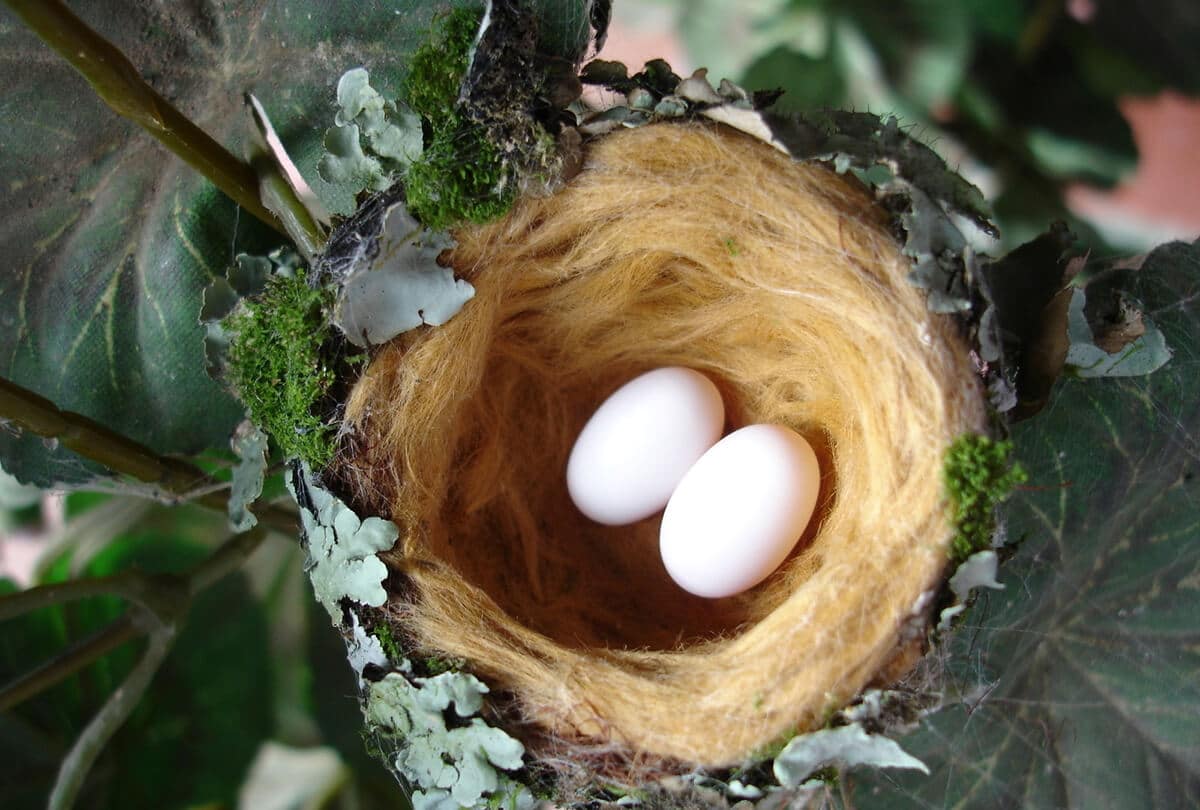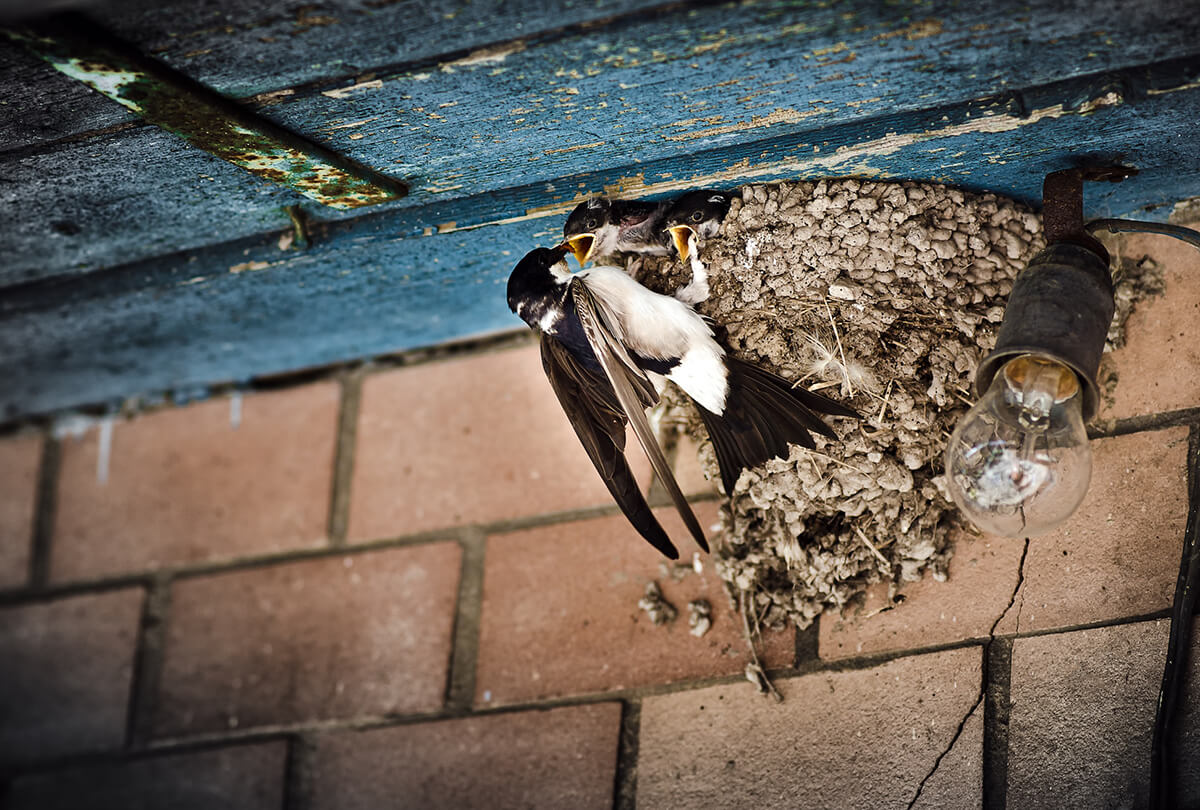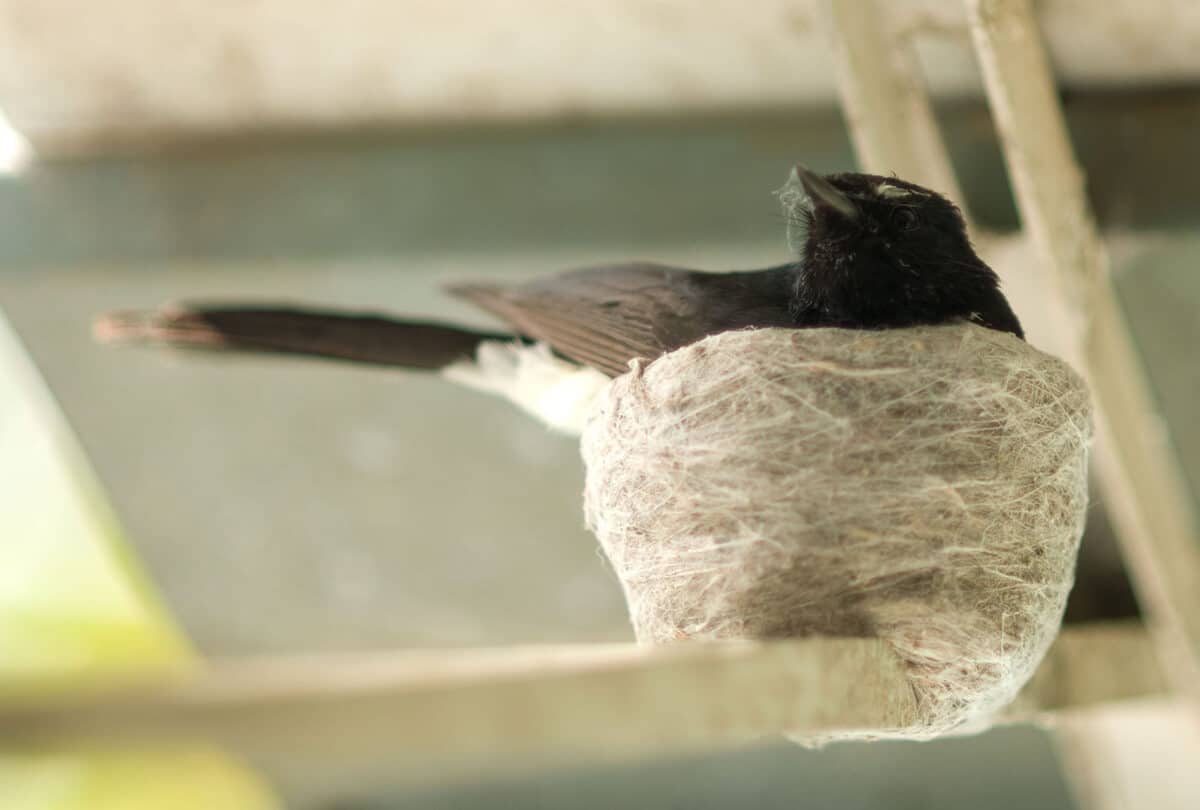Birds can be wonderful.
Birds Can Be Wonderful
Birds provide the background music to our lives, singing their songs in our neighborhood, occasionally waking us, sometimes lulling us to sleep as we take an afternoon nap under the shade of a tree. Summer would not be complete without their serenade.
Depending on where you live, you may also be treated to flashes of red, blue, or yellow in your yard. Their colour, already lovely to begin with, can seem even more welcome during the cold, drab months of winter.
Bird Nest Can Be Too Close
For all the joy that they can add to our lives and our environment, however, there are times when you may not be quite so fond of them. You may find them taking up residence someplace undesirable to you, or perhaps someplace unsafe for them. When that happens, you will want to know the right steps to take, and safety measures to follow, for how to remove a bird’s nest.
Encroaching Nature

For most of us, wildlife problems tend to be focused on four-legged pests. Raccoons may take a liking to your cooking and come in search of your table scraps. Skunks may have unfortunate encounters with your pets or may hang out on your lawn, making you hesitant to venture outside, while mice may try to come inside and cohabitate with you. In certain areas, you might have encounters with deer, foxes, or any number of creatures. What most of us don’t think of as problematic, are birds.
Although some birds may have annoying calls, most tend to be fairly unobtrusive, and if you choose, they are easy enough to ignore. They don’t tend to be viewed as pests in the same way as earthbound creatures, but they can certainly cause you problems on occasion, usually by choosing inappropriate locations to build their nests.
You might find yourself with a bird’s nest above a door, over your garage, inside a shed, or at some other high-traffic areas, which may result in some angry rebukes from your new winged neighbours. Other birds may end up making their nest on top of your lawnmower, heat pump, or some other place that could be harmful to them.
Whatever the case may be, and however it may arise, there will be times when you want to remove or relocate a nest, and when that happens, there are certain things to be aware of and certain precautions to take.
Know the Law
Before you make any attempt at removing the unwanted nest, be aware that there are laws in place that protect the nest and eggs of certain types of bird. Some of these laws are provincial, while others are federal. In some cases, you will need to seek approval from the Ministry of Natural Resources prior to disturbing the nest. This is true for both nests that are in use– with or without eggs– and nests of certain species where the birds seem to have moved on. In the case of migratory birds, you may need other approvals, including from the federal government.
More Than Birds
Unless one suffers from ornithophobia (the fear of birds) or has been watching Hitchcock, the thought of dealing with an inconveniently placed bird nest does not seem too troubling. One might assume it is a simple matter of picking it up and then gently depositing it in a new location. Unfortunately, it is not quite so simple, and other precautions should be taken as much for the one moving the nest as for the birds themselves.
A bird’s nest is often home to more than is visible. In addition to providing a home to the birds, a nest will often carry an assortment of pests and parasites. It is not usually the birds or the nest itself that poses a problem to humans, but the nest may be home to ticks, chiggers, scabies, mites, and fleas, all of whom would be equally happy to feed on humans as the nest’s inhabitants. If the nest is located near a point of entry such as windows, dryer vents, or something similar, you may find yourself dealing with an infestation far more troublesome than a few birds. Keep in mind that these pests are small enough to pass through the holes of your window screens.
In addition to the various pests that might emerge from the nest, there is also the matter of bacteria and airborne threats. Histoplasmosis is an incurable disease that can result from inhaling spores released by a fungus growing on bird feces. Presenting non-specific symptoms that may appear flu-like, histoplasmosis attacks the lungs primarily, but may also affect other organs. If left untreated, it may prove fatal.
So now that you know the various issue facing you in dealing with a nest, how exactly do you go about removing one?
This Job is For the Birds

Assuming that the nest is in a location that requires it to be removed, and assuming that you have all the required permissions to actually do so, you want to make sure that it is done properly and safely.
The best time to remove a nest is during the building stage. If you have had issues with nests in the past, you should be watching for signs of their return in early spring as they return to warmer climates. Ideally, you will catch it before it is completed and before any eggs are present, and you can try to dissuade the birds from building in that location.
If by the time you discover the nest the birds are in place, complete with eggs, you will have to wait approximately 4 weeks, which should be sufficient time for incubation to be complete and for the young to leave the nest. You should contact a professional on how to proceed.
Once the nesting period is over, it is best to move quickly, before parasites find their way into your home.
Safe Procedures to Follow
As mentioned, you will want to take certain precautions to protect yourself from pests and bacteria.
- Suit up. Wear long sleeves and long pants. Wear latex gloves, such as those used in hospitals or for painting, to protect your hands against mites and ticks and to avoid touching bird feces. Wear a respiratory mask to protect against fungal spores and bacteria.
- Carefully inspect the nest, using a ladder if necessary, to ensure it is empty and without eggs.
- Some experts advise spraying the nest with an over-the-counter antibacterial spray to kill bacteria. Spray, then wait a few moments before proceeding.
- Remove the nest. Place it in a container or exterior trash bag away from the home for proper disposal. Ensure that it is sealed securely.
- Clean the area with a strong disinfectant. This is important for the removal of fecal matter and associated health risks.
- Do what you can to make sure that no other birds will find the same spot appealing; fix a broken dryer vent, or repair small holes, for example. Depending on the location, you may also want to install a statue of an owl or cat to dissuade future building, or use other types of bird repellant. If a bird feels threatened by one of its natural predators, it is unlikely to choose that location to build a nest. If you have pets such as dogs or cats, they can be used to frighten birds away. Often the sights, sounds, and scent of your pets is enough to keep birds at bay.
- Remove and dispose of your gloves. Remove your clothing and wash immediately in hot water to kill any chiggers or mites that may have survived the spray. Wash your hands thoroughly with hot soapy water.
- If you find that you are unable to remove the nest for any reason, contact a professional, who will be able to do it securely and humanely. This is, of course, the safest and easiest option for both you and the birds.
More Enjoyable from a Distance

There is no doubt that birds can be a wonderful addition to your yard. Certainly, many people enjoy birdwatching or listening to their songs. Even if you don’t see them often, chances are you hear them on a regular basis. Without them, your neighbourhood would be a less interesting place. They are best enjoyed from a certain distance, however. Birds that build their nest too close to your home, or in other inappropriate places can be problematic for all parties involved.
Be sure to keep a watchful eye on the exterior of your home, especially if you have had problems in the past. It is easier to dissuade birds from building than to deal with their nests after the fact. Remember to seek all appropriate permissions if you need to take action, and seek the advice of a professional if you are uncertain or unable to proceed on your own.
There is no reason why having birds around your home should be problematic so long as you take the right steps to keep them from building in places where they are not wanted and follow the right measures to remove the nest if they do.
If the thought of removing a bird’s nest is stressing you out or just isn’t your cup of tea, you can always contact a professional bird control specialist in Vancouver to handle the job for you.
For your free rodent control consultation, call us now at 1-855-858-9776 now!
Solution Pest Control
DIY Pest Control
If your pest issue is not too big, you may want to try one of these pest control products.
Pest U 101
Our knowledgeable pest detectives are happy to talk to you and educate you on the signs and characteristics of the most common pests.
Our Guarantee
Solutions Pest Control will solve your specific pest problem. If we can’t, we’ll help you find someone who can. – That’s our guarantee to you.
Pest Control Service Request

Complete this form today. Our pest experts will
- contact you,
- learn about your pest issues, and
- schedule a service to solve your pest problem.
We’ll bring you peace of mind!

